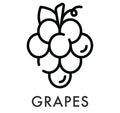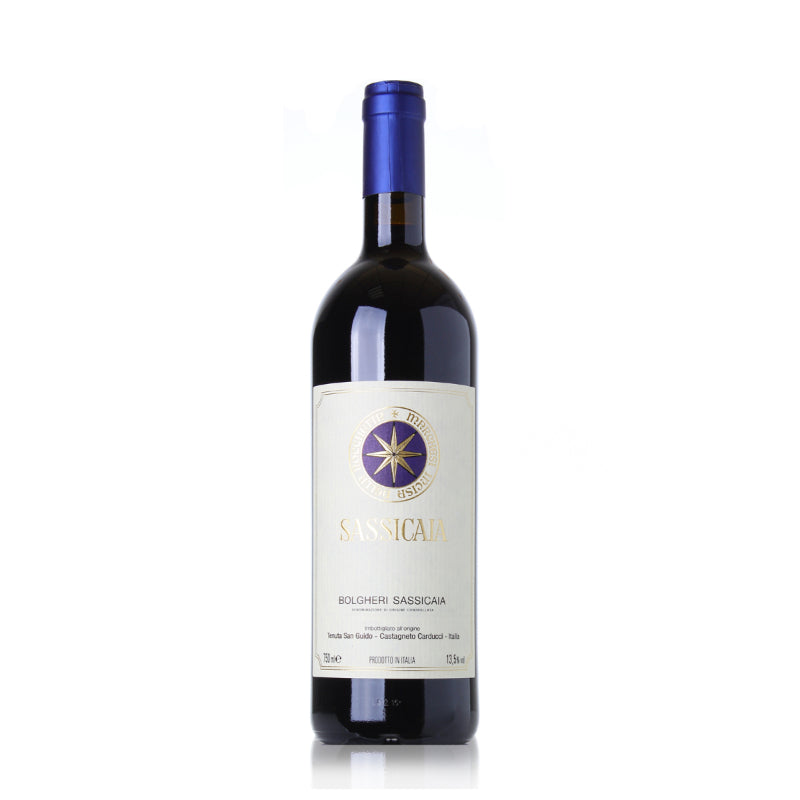Tenuta San Guido Sassicaia 2019 750ml










The 2019 Sassicaia is a smooth, classic Cabernet with juicy berries, cedar, and a touch of mint. It’s full-bodied but balanced and polished. Great to drink now, but it’ll get even better after 2026. Made with care, aged in oak for about two years, it’s a stylish, elegant wine that’s easy to love.
James Suckling | JS 99
Published: Apr 4, 2022
The purity of cabernet sauvignon fruit is exceptional here, with character and sensibility that’s reminiscent of some of the great Sassicaias from the 1980s, such as 1982 or 1988. But this is much more precise and clean. Aromas and flavors of currants and berries with cedar and earth. Sage and minty character, too. It’s full-bodied yet there’s so much polish and balance, together with structure, elegance, and refinement. Hard not to drink at this stage, yet give it time and respect. This will be a classic Sass and reminds me why I love this wine. Try after 2026.
The Wine Advocate | RP 98
Published: Jan 13, 2022
Drink: 2025-2055
The latest release from Tenuta San Guido is the 2019 Bolgheri Sassicaia. The bouquet is up front and very expressive from the get-go. It offers a generous display of crunchy, dark cherry that hints at the extra concentration and fruit weight obtained in the 2019 growing season. This vintage will be remembered for the crisp richness of the fruit and its important textural imprint. It also shows fine elegance, bordering on the ethereal, with berry aromas, tarry earth and brushes of balsam herb or grilled rosemary. Sassicaia always shows an almost-glossy finely knit quality to the polished mouthfeel, and I find it again here next to fresh acidity and firm tannins. Mouthfeel in 2019 is the wine's strongest suit. The 2019 is one of the prettiest and most balanced editions of Sassicaia we've seen this past decade, along with the back-to-back duo of 2016 and 2015. The 2019 marries the precision of the 2016 with the rich fruit weight of the 2015.
Jancis Robinson | JR 17.5
Published: Sep 7, 2023
Drink: 2024-2034
Tasted blind – we only know it is from 2019 and could be Ao Yun.
Relatively pale colour for a Cabernet. Cassis, leather, liquorice. Well-integrated oak giving light spiciness. Tight structure with particular acidic drive. Malleable tannins. Bone dry, not quite austere, but certainly very savoury – the fruit is ripe but not at all over-cooked. Not hugely pleasurable at this stage, but has the trappings of greatness beneath that young severity.
Tenutasanguido.com
The wines of Tenuta San Guido are three different expressions of a unique style. Sassicaia, from which everything began. Guidalberto, which after more than twenty years has reached full maturity. Le Difese, a wine of great pleasantness that best represents the Tuscan character.
SOIL STYLE
The soils on which the vineyards stand has varied and complex terrain features with a strong presence of limestone, feature areas rich in marl and pebbles as well as being partly clayey. The production facilities are located at an average altitude of between 80 and 400 metres above sea level, with a west/south-west exposure.
WEATHER TRENDS
After an autumn with mild temperatures and frequent rainfall, the winter was fairly dry with temperatures often above the seasonal average. Spring came a little early and, from mid-March, the beautiful sunny days and the consistent rise in temperatures anticipated the growth of the buds. However, in April the weather changed again with a substantial drop in temperatures and the return of rain. The entire month of April was very rainy, and this situation stabilised the water reserve of the soils. The continuation of spring was rather unusual with rainfall and cold temperatures also affected by tramontana winds. From the end of May, the weather improved, and from June, summer arrived with sunny days, normal temperatures and excellent ventilation (particularly at night).
The end of June recorded intense temperatures, but fortunately this sweltering heat only lasted for a short time, with the continuation of summer stabilising at temperatures well within the seasonal average. July and August were hot months, but still with temperatures within the norm, without any excesses, except for the last week of July where the muggy heat persisted for about a week. Immediately after mid-August, there was some rain that brought coolness back and helped normalise plant vitality.
HARVESTING
The harvest, which was carried out entirely by hand, began in the second week of September with the cabernet franc grapes and then continued with the cabernet sauvignon, starting first with the vineyards at lower altitudes, and ending in the first ten days of October in the hillside vineyards above 300 metres above sea level.
FERMENTATION
Selection of the grapes using a sorting table, soft pressing and gentle destemming of the grapes using suitable machinery so as not to break the integrity of the berries. Alcoholic fermentation (entirely spontaneous and without the addition of external yeasts) was completed in mid-October and took place regularly at a maximum temperature of 26-27 °C. The malolactic fermentations carried out in stainless steel vats were completed with regularity at the end of November thanks to the reduced external temperatures. In early December wine was placed in barrels from the first ten days of December 2019.
AGEING
Once malolactic fermentation was complete, the wine was placed in French oak barriques, and a small part in American oak, where it was aged for a period between the 20 and 25 months. The duration of the ageing is technically decided on the basis of the seasonal trend of the vintage.

